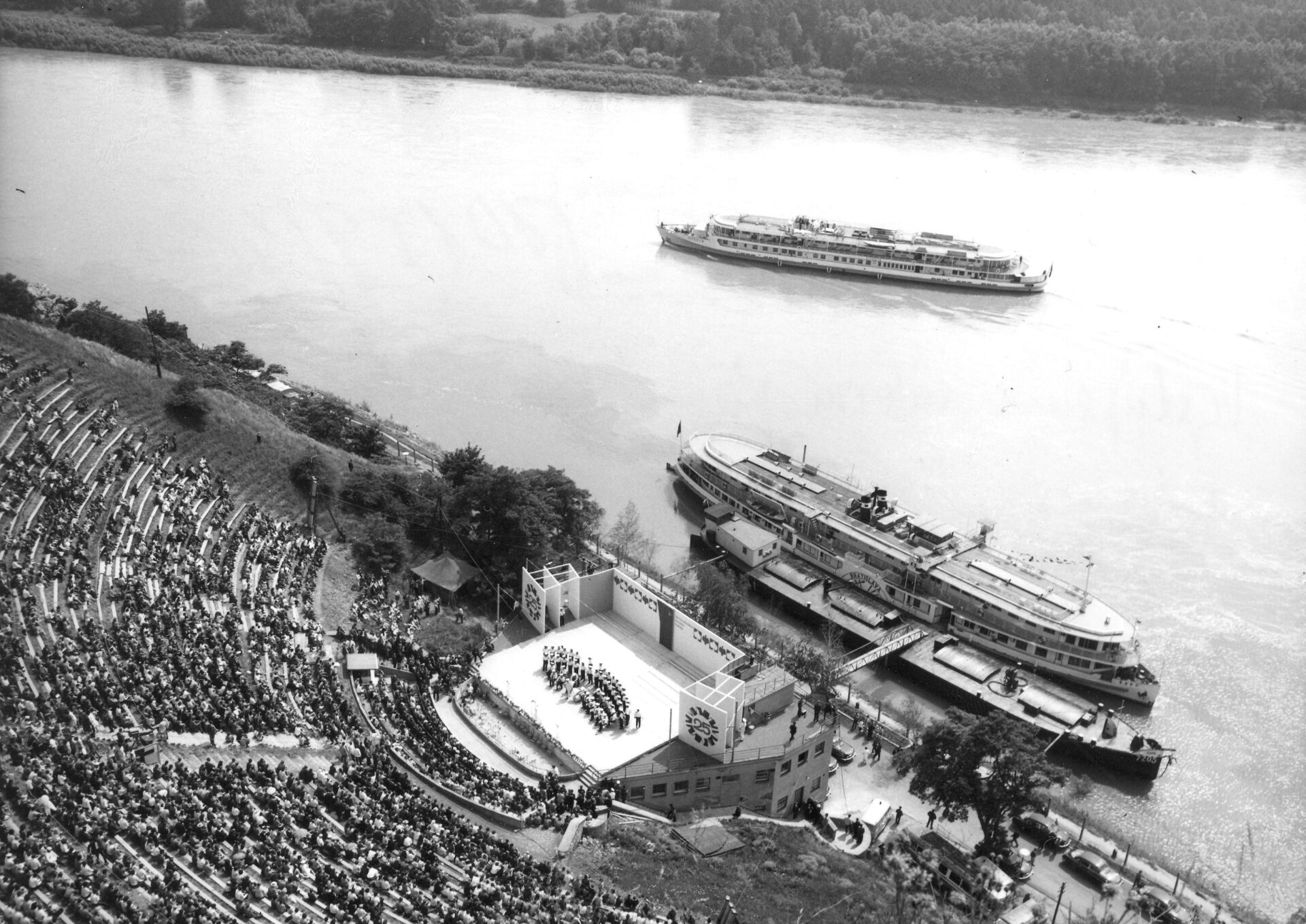After years of disputes, the city of Bratislava has regained ownership of the property and is now planning its revitalization. This process will involve a comprehensive examination of its complex history, presenting an opportunity to generate new significance. What, then, is its history?
The origins of the amphitheater are closely tied to the period of World War 2. Already before the war’s outbreak, in November 1938, Devín was detached from Czechoslovakia following the Munich Agreement and directly annexed to Germany. What followed was the construction of the amphitheater on the southern slopes of the castle hill, symbolically marking the capture of Devín. The first event took place here on May 28, 1939, attracting approximately 10,000 attendees, although the amphitheater was far from finished.
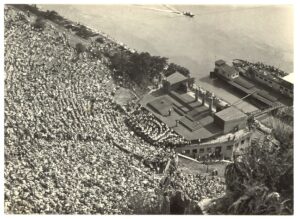

This event was known as the Grenzlandtreffen, a gathering of Germans from the border region. Its primary objective was to demonstrate unity, allegiance to the German Third Reich, and obedience to their leader, Adolf Hitler. the new administration erected a wooden swastika on the castle hill, which remained in place for several weeks.
The amphitheater was hastily constructed in the months leading up to its opening, bearing all the marks of its era. The historical significance of the castle was completely ignored. For instance, a portion of the medieval fortification was sacrificed for the construction of the auditorium. Ideology was key, as the amphitheater aimed to become a new pilgrimage site, modeled after similar spaces in Germany. It was intended for pompous propaganda events promoting the superiority of the German nation and race.
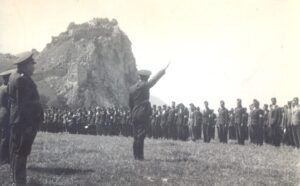
Exactly one month after the gathering of Germans living in border areas, a meeting of educators from Vienna County took place in the amphitheater on June 28, 1939. A week later, on July 5, 1939, German authorities approved the Cyril and Methodius Festival in Devín, granting Slovaks entry without passports, which was otherwise restricted. The amphitheater was adorned with German and Slovak national flags, as well as flags of the Hlinka Guard and Hlinka Youth. Alexander Mach, leader of the Hlinka Guard, delivered the main speech. Interestingly enough, he praised German policies toward nations and nationalities in Europe at a location seized by Germans from the Slovak State, with no intention of returning it.
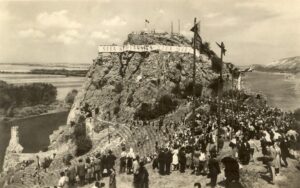
Because of World War 2, the amphitheater’s use was largely restricted, but its purpose as a venue for mass events remained. Devín was liberated on April 6, 1945, and the first significant post-war demonstration occurred in the amphitheater on July 5, 1945, known as All Slavs Day. Other mass events were regularly held here each year in early July. This date was deliberately chosen to replace pre-war celebrations linked to the Feast of Sts. Cyril and Methodius. Following 1948, the organization of these events was entirely taken over by the communist regime, primarily for propaganda dissemination.
It was under the communist regime’s rule that the stage and the amphitheater were finally completed. The stage was finalized and opened just before the All Slavs Day celebrations on July 5, 1949. In 1950 and 1951, other larger events were held here as well. However, for nearly a decade afterward, the amphitheater ceased to fulfill its purpose. “Following their rise to power, the Communist government swiftly implemented measures against free movement in the border area, culminating in the enactment of the State Border Protection Act in July 1951. Devín was designated as a border zone, accessible only with special permits. Border Guard soldiers were stationed to patrol the area, authorized to use weapons against any “trespassers”, even unarmed ones. The use of the amphitheater for public events was unthinkable in such conditions, given that ordinary people had no chance to even get to the castle itself,” explains Milan Zálešák, head of Devín Castle.
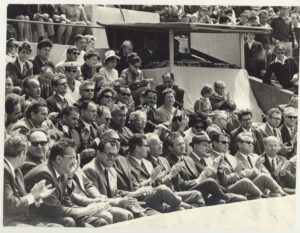
Devín bore witness to numerous tragic events in the following years as border guards in the area intervened against individuals attempting to illegally cross into Austria. At one point, a Border Guard company even established its headquarters directly within the amphitheater, which was solely utilized for military purposes at that time. Following the Prague Spring era in the 1960s, Devín was removed from the border zone, and the amphitheater and its surroundings were once again utilized for events that were still influenced by communist propaganda. In the mid-1960s, the Border Guard vacated the amphitheater, and in 1968, a café was constructed, offering a direct view of the confluence of the Danube and Morava rivers, as well as the Iron Curtain fence. Beneath the café, occasional attempts to escape to Austria occurred, some ending in success while others in tragedy. In December 1989, the amphitheater witnessed the symbolic fall of the Iron Curtain during the “Hello, Europe!” march, as people spontaneously dismantled the fencing directly beneath it.
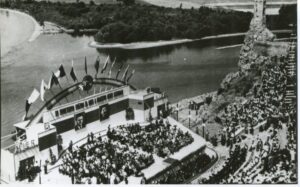

The history of the Iron Curtain in the Devín area is the focal point of a new exhibition curated by the Bratislava City Museum at Devín Castle. “We have prepared this exhibition in cooperation with the Nation’s Memory Institute. It will be available to all visitors from the second half of May 2024 in the exhibition space located in the courtyard of the central castle,” says Milan Zálešák.
What became of the amphitheater after the fall of the Iron Curtain? The amphitheater fell into disrepair and became overgrown with weeds over time. In 1985, the Devín Castle Rock was designated a national natural monument due to its significance as an important geological, botanical, and zoological site. The former amphitheater site is situated directly within its protected zone. Furthermore, a significant portion of the Devín area is now part of the European NATURA 2000 system of protected areas, designated by member states of the European Union to safeguard the most valuable and endangered European species and habitats.
The future of the former amphitheater is uncertain following its acquisition by the Bratislava Municipality. However, the designation of the amphitheater building as a national cultural monument indicates that any future use should prioritize the preservation of the monumental and natural values that contribute to Devín’s exceptional status, not only within Slovakia but also in the broader Central European context.
